Forum on trading, automated trading systems and testing trading strategies
Something Interesting to Read June 2014
Muhammad Syamil Bin Abdullah, 2014.06.28 08:35
Inside The Black Box : Rishi K Narang
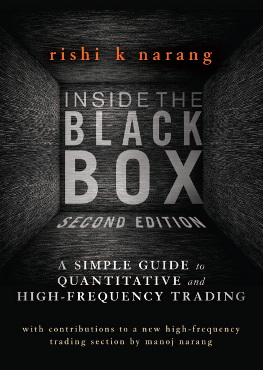
Whether you call it quant, algo, or black box trading, it all adds up to the same thing: systematic trading performed by computers.
While some decry it as dangerously detached from human control, and a driver of excessive volatility in the markets, others see quantitative trading as a welcome departure from the unruly passions and cognitive biases that inform human investment decision making.
Say what you will about quant trading, the fact is, overall, quant funds consistently outperform the markets—which may be why so many smart investors are keen to avail themselves of that black box magic.
Unfortunately, much remains obscure about quantitative trading, thanks in great part to the extreme guardedness of quants when it comes to the details of how their systems work. But, as quant-trader and master explainer Rishi Narang deftly shows in this updated edition of his bestselling guide, quantitative trading is much easier to understand and take advantage of than you think.
Designed to make quantitative trading comprehensible to even the most math- or technophobic investor, this book takes you on a guided tour inside the black box. In plain English, Mr. Narang turns the lights up on what the quants are up to, once and for all lifting the veil of mystery surrounding quantitative trading and quantitative trading strategies.
Following a concise introduction to quantitative trading principles and general practices, Mr. Narang cuts to the chase with a detailed inventory of the contents of a typical black box system, explaining, in non-technical terms, what each one is and how it fits together with the others.
Then, with the help of numerous real-world examples and lively anecdotes, he clearly explains:
- The most common quant system structures
- How quants capture alpha
- The level of discretion in quant trading
- High-frequency trading and the infrastructure that supports it
- Execution algorithms and how they work
- How quants model risk and how to know if a particular model really works
- The important difference between theory-driven systems vs. data-mining strategies
- How to evaluate quant managers and their strategies
- How quant strategies can fit into an overall portfolio strategy—and why they're so important
- Current and future trends in quant trading and the role it will play in the years ahead
A book that lifts the lid on black box trading, making it transparent, intuitively sensible, and readily understandable, Inside the Black Box is a must-read for institutional investors, asset managers, investment advisors, pension fund managers, and all savvy investors looking to gain an edge in today's turbulent financial markets.
Forum on trading, automated trading systems and testing trading strategies
Something Interesting to Read February 2014
Sergey Golubev, 2014.02.04 15:21
Trading Price Action Reversals : Al Brooks
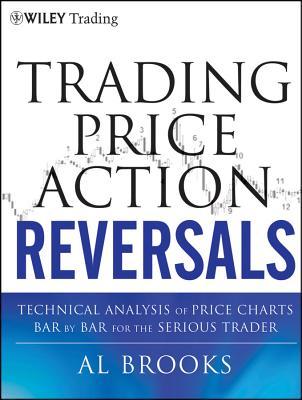
detailed guide to profiting from trend reversals using the technical analysis of price action
The key to being a successful trader is finding a system that works and
sticking with it. Author Al Brooks has done just that. By simplifying
his trading system and trading only 5-minute price charts he's found a
way to capture profits regardless of market direction or economic
climate. His first book, Reading Price Charts Bar by Bar, offered an
informative examination of his system, but it didn't allow him to get
into the real nuts and bolts of the approach. Now, with this new series
of books, Brooks takes you step by step through the entire process.
By breaking down his trading system into its simplest pieces:
institutional piggybacking or trend trading, trading ranges, and
transitions or reversals (the focus of this book), this three book
series offers access to Brooks' successful methodology. Trading Price
Action Reversals reveals the various types of reversals found in today's
markets and then takes the time to discuss the specific characteristics
of these reversals, so that you can use them in your everyday trading
endeavors. While price action analysis works on all time frames, there
are different techniques that you can use in trading intraday, daily,
weekly and monthly charts. This, among many other issues, is also
addressed throughout these pages.
- Offers insights on how to handle volatility and sharp reversals
- Covers the concept of using options when trading certain charts
-
Examines how to deal with the emotions that come along with trading
Other books in the series include Trading Price Action Trends and Trading Price Action Trading Ranges
If you're looking to make the most of your time in today's markets the
trading insights found in Trading Price Action Reversals will help you
achieve this goal.
================
Trade Stocks and Commodities with the Insiders: Secrets of the COT Report

Everyday, the true superpowers of the market influence the future price performance of various commodities through their buying and selling activities. These superpowers, more commonly known as "Commercials," are often household names—such as Pillsbury and General Mills, if you're looking at natural resource commodities, or Chase Manhattan when it comes to financial commodities.
Whenever these large and powerful traders make a move, they must leave behind a paper trail, due to the federal law that requires Commercials to report their massive trading activities once every week. This valuable information is then disseminated by the Commodity Futures Trading Commission through the Commitment of Traders (COT) report.
Now, for the first time, in Trade Stocks & Commodities with the Insiders, world-renowned trader Larry Williams reveals industry secrets that will help you align yourself with the billion-dollar traders and pools that move in and out of the marketplace each day. You'll be introduced to the best resource for achieving this goal—the COT—and learn exactly what this information means for you. Williams explains this reporting system in detail and lays out a plan that will allow you to maximize profits and manage downside risk by trading side by side with the largest commercial interests in the world.
Larry Williams has been following the smart money crowd for over thirty years, and with this guide, he'll show you who these people are and how to profit from their actions—whether you are interested in agricultural commodities such as soybeans or the new breed of financial commodities consisting of currencies, bonds, and stock market indices. While most market followers look at charts, Trade Stocks & Commodities with the Insiders will help you focus on the true market conditions that effect price change—large buying and selling as well as supply/demand pressure—which you'll be able to gauge each week with the COT report.
There is no master key that can unlock all the doors to successful price forecasting, but with Trade Stocks & Commodities with the Insiders as your guide, you'll discover how the proper interpretation of COT data can add substantial profits to your portfolio.
The Mental Edge in Trading explains the critical link between successful trading and personality traits--and it gives you the tools to use this information to make smarter trades.
A highly trained psychiatrist, Dr. Jason Williams, son of legendary trader Larry Williams, explains how to assess and measure your innate personality traits and align them with your trading style for more profitable trading on a more consistent basis.
Dr. Williams tested proven winning traders who were managing billions of dollars to see what the great winning traders had in common, what personality traits made them so successful. The results are in this groundbreaking book that will help you become like these winning traders.
His conclusions are based on hard science, the latest brain research, and the careful study of successful traders, not on psychobabble meanderings. Dr. Williams provides:
- A comprehensive overview of how personality/emotions affect every trading decision
- The information you need to determine the emotions that dominate your decision making
- Proven methods for adapting your trading plan--and your behavior--to make more money than ever
With The Mental Edge in Trading, you have everything you need to apply your cluster of personality traits to become a better, wiser, and more consistently successful market trader.
Solid trading strategies and accurate market indicators are crucial. But when push comes to shove, the glue that binds them is your emotional state at any given time. When things go south, the best trading system will collapse like a house of cards--if you allow it to.
The Mental Edge in Trading provides the tools you need to ensure this never happens to you by helping you understand and use your emotions when it counts most. It's the key to long-term trading success.
Until now, no other book has provided a practical, detailed method for achieving the mental edge in trading. What you'll find inside is based on intensive research into the minds of today’s most profitable traders.
The Mental Edge in Trading explains the immutable relationship of human thought, emotion, and behavior and reveals how to:
- Determine if you should be a systems or discretionary trader
- Conquer you underlying fear of risk by understanding where it comes from
- Calm innate anxieties before you start your trading day
- Use optimism as a "tool" for profitability
- Remain vigilant as to why you are placing each and every trade
This complete trading-improvement tool gives you the information you need to determine and improve your personality traits, discover your dominant emotions, and use this information to adapt your behavior for more successful trading.
The Law of Vibration: The revelation of William D. Gann
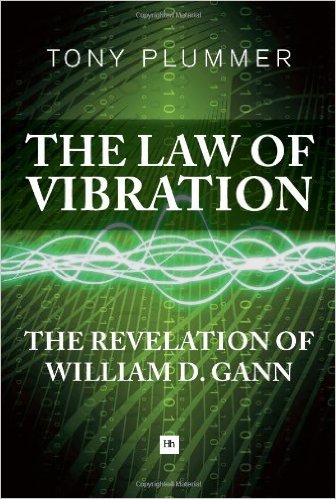
In 'The Law of Vibration' Tony Plummer presents a new theory which he argues is revealing of a fundamental truth about the deep-structure of the universe. The Law is embodied in a very specific pattern of oscillation that accompanies change and evolution. It can be found in fluctuations in stock markets and in economic activity. The research here suggests that the pattern was known about in antiquity because it was buried in a short passage in St Matthew's Gospel in the Bible. It also suggests that it was known about in the early part of the 20th century because it was concealed in the structure of books written by the renowned stock market trader, William D. Gann, and by the mindfulness exponent, George Gurdjieff. Both men chose to preserve their knowledge of the pattern in a hidden form for some unknown future purpose. Now, after 20 years of investigation, Tony Plummer tells the story of how the pattern was originally hidden. Drawing on painstaking research on gematria, the enneagram and financial market analysis, Plummer reveals the existence of a behavioural pattern that may have profound implications for the way that we view the world. Plummer's work is elegantly structured and illustrated throughout. It is an exciting and thought-provoking study for Gann enthusiasts, and also for investors, economists and scientists who have an interest in the laws that underpin systemic coherence and produce collective order.
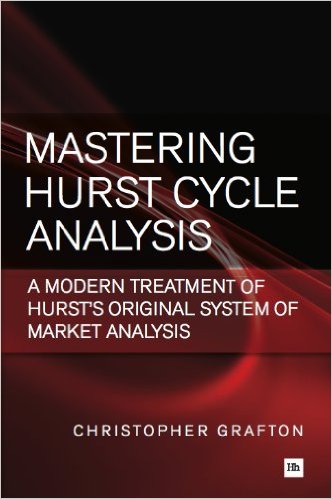
In 2011 the work of J. M. Hurst, considered by many as the father of
modern cyclic analysis, enjoyed sudden and renewed interest by the
trading community. This translated into several works approaching
Hurst's methods from three different angles.
Just as stated by the author, it will help
readers get a better grasp and understanding of Hurst's work, at a
fraction of the the cost of his original private course. It will even
provide buyers with the relevant code for Tradestation and Updata. This
way, if you're tech savvy and already own one of these charting
packages, or don't mind the additional investment needed to use them,
you will be able to experiment further with the concepts covered in the
book. Since it contains the code for all the different cycles, channels
and other indicators, the author spares the reader the math details of
Hurst's work, which may be for the best, since this has always been one
of the stumbling blocks in applying Hurst's methods.
The
self-proclaimed goal of the author is to lead the reader to a stage
where he can perform his own cyclic analysis. The bottom line is that
how well you master Hurst's methods after reading this book, as with so
many other things in life and trading, will depend solely on how much
work you're willing to put into experimenting with the concepts.
The
book ends with a concise summary of the different theories explaining
the causes of cycles, which should stimulate even further research into
this fascinating subject.
Mr Grafton mentions the Sentient Trader
software, by David Hickson, which covers similar ground. The author of
that software has, understandably, undertaken a different approach:
there is no code sharing, but instead a sleek black box, which generates
trading signals based on Hurst's original work.
There is also
the OddsTrader app, by CIT Dates, which is currently the only mobile app
that allows users to chart Hurst channels and to use them as the basis
for several different trading strategies. It even includes a built-in
risk management and position sizing tool.
In summary, if you're
interested in cycles and cyclic analysis, there has hardly been a better
time for delving into and exploring the subject.

This book is light reading compared to Ben Graham's seminal tome,
Security Analysis. It's easier to read, and shorter. It's also more up
to date. Highly recommended for investors of any stripe, value or
growth. The appendix, from Warren Buffett's speech at Columbia
University is particularly entertaining, as he debunks academia's love
affair with efficient market theory. Jason Zweig, an obvious Graham
disciple, does a fantastic job bringing the book's principles to life
through modern examples. The only grating thing is his constant
derision of brokers or anyone that actually gets paid to manage money.
(full disclosure: I'm an analyst now and was a broker for 10 years).
Ben
Graham clearly invested in the stock market during a period of
hustlers, crooks, crashes, and frauds. Brokers, investment bankers and
analysts back then were not much more than fast-talking salesmen. Wait a
minute, that sounds just like the way things are today on Wall Street!
Things may not have changed as much as we would like to think. Due to
his travails as an investor in difficult markets, Ben Graham's
investment style evolved into a systematic, logical approach which
became the basis for value investing. In "The Intelligent Investor",
Graham lays out the foundation of value investing by three introducing
key principles: the idea of "Mr. Market", a value-oriented disciplined
approach to investing, and the "margin of safety" concept.
"Mr. Market."
The
stock market on a daily basis resembles a casino, only without the
comfort of free cocktails. Watching the stock ticker is like having a
business partner that is totally schizophrenic; Graham calls him "Mr.
Market." One day he loves the business and wants to pay a ridiculous
price to buy out your half. The next day, all hope is lost, and he
wants to sell you his portion for pennies on the dollar. Graham argues
that this daily liquidity is an advantage that most investors turn
against themselves: (p. 203) "But note this important fact: The true
investor scarcely ever is forced to sell his shares, and at all other
times he is free to disregard the current price quotation. He need pay
attention to it and act upon it only to the extent that it suits his
book, and no more. Thus the investor who permits himself to be
stampeded or unduly worried by unjustified market declines in his
holdings is perversely transforming his basic advantage into a basic
disadvantage. That man would be better off if his stocks had no market
quotation at all; for he would then be spared the mental anguish caused
him by other persons' mistakes of judgment." This is profound. It's
not a question of whether our stocks will drop; they will: the trick is
how we respond to that eventuality.
Ben Graham's Stock selection for the defensive investor.
Graham
lays out some important characteristics of "value" stocks. (p. 348).
Some of the metrics are dated, but the principles are still valid. Even
deep value investing today would seem like GARP investing to Ben
Graham. Investors are now more focused on future earnings than they
were in his day, and valuations reflect that. Graham recommends:
a. Adequate size of the enterprise (>$100M revenue, old figure)
b. Sufficiently strong financial condition (2:1 current ratio)
c. Earnings stability (some earnings every year last 10 years)
d. Dividend record (uninterrupted payments for at least 20 years)
e. Earnings growth (1/3 increase in per share EPS past 10 years)
f. Moderate price/earnings ratio (P/E < 15x average last 3 years EPS)
g. Moderate ratio of price to assets (price/book < 1 1/2 times)
h.
Overall stock portfolio, when acquired, should have an overall earnings
/price ratio- the reverse of the P/E ratio - at least as high as the
current high-grade bond rate. A P/E no higher than 13.3 against an AA
bond yield of 7.5%
Margin of Safety as the central concept of value investing.
This
is an investment rule that was written by a man who had been deeply
bruised by bear markets. I believe he came up with this by learning
from his losses. When the market turns into a storm of feces, like it
inevitably will, if the stock has no earnings to rely on, you have
nothing to grab onto. You can't make yourself stay in the stock when
the price is down. Graham says: (p. 515) "The margin of safety is the
difference between the percentage rate of the earnings on the stock at
the price you pay for it and the rate of interest on bonds, and that is
to absorb unsatisfactory developments". Furthermore he writes: (p. 518)
"The buyer of bargain issues places particular emphasis on the ability
of the investment to withstand adverse developments. " You can and will
still lose money in the market with value-oriented investing, but
according to Graham: (p. 518) "The margin guarantees only that he has a
better chance of profit than for loss-not that loss is impossible."
Conclusion
So
that's it, those are the three basic points of the book, but you should
still buy it and read it, it's a very enjoyable experience, Shakespeare
for the investing crowd. Despite being a realist, Ben Graham wasn't a
total pessimist. Late in the book Graham makes a point that is one of
my favorites: (p. 524) "A fourth business rule is more positive: "Have
the courage of your knowledge and experience. If you have formed a
conclusion from the facts and if you know your judgment is sound, act on
it- even though others may hesitate or differ. You are neither right
nor wrong because the crowd disagrees with you. You are right because
your data and reasoning are right. Similarly, in the world of
securities, courage becomes the supreme virtue after adequate knowledge
and a tested judgment are at hand. "
Cybernetic Analysis for Stocks and Futures: Cutting-Edge DSP Technology to Improve Your Trading
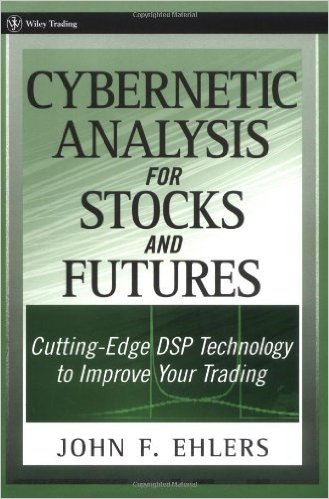
John Ehlers’s contributions to the art and science of trading have been nothing short of extraordinary. From his pioneering work applying maximum entropy spectral analysis (MESA) software to trading markets, to his definitive tour de force Rocket Science for Traders, Ehlers’s innovative and market-proven approach to cycle analysis and market forecasting has earned him a reputation that is unmatched among technicians and technical traders worldwide.
In Cybernetic Analysis for Stocks and Futures, Ehlers takes the next step, developing and demonstrating profoundly effective new trading tools through the application of modern digital signal processing techniques. Obtaining accurate cycle measurements within five samples with virtually zero lag, these tools have proven in real-time use to consistently provide traders with razor-sharp buy and sell signals in virtually any market–meeting or exceeding the performance of commercial systems which cost hundreds or even thousands of dollars.
To increase the book’s functionality and ease of use, each new technique, indicator, and automatic trading system is defined in both EasyLanguage code (for use in TradeStation™) and eSignal Formula Script (EFS) code. DLLs to work with NeuroShell Trader are also available. Modernizing popular trading procedures to take advantage of the incredible computing speed and power available to today’s trader, Ehlers introduces:
- The Fisher Transform–ensure that the density function of any indicator is Gaussian, creating sharper trading signals
- The Relative Vigor Index–a responsive oscillator in which movement is normalized to the trading range of each bar
- Improved Hilbert Transform–a more responsive method to accurately measure market cycles
- The Sinewave Indicator–a non-causal filter that gives entry and exit signals 1/16 of a cycle period in advance of the turning point
- The Laguerre Transform–a new tool to address the smoothing versus lag problem more effectively and create better smoothing filters
- Super Smoothing Filters–provide more smoothing with less lag
- Simple Moving Average Computations–two new ways to compute the simple moving average with unprecedented ease
Advances made in computer technology in the past two decades have clearly outpaced advances in trading software and practice. Cybernetic Analysis for Stocks and Futures seeks to restore the balance between computational power and user proficiency. Combining new indicators with tested systems for forecasting stock and futures markets with surgical precision, it will drive your systems to new levels of predictive accuracy, trading effectiveness, and overall profitability.
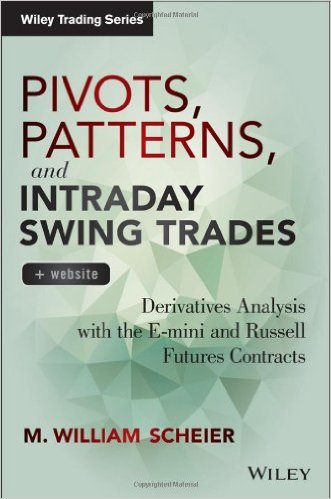
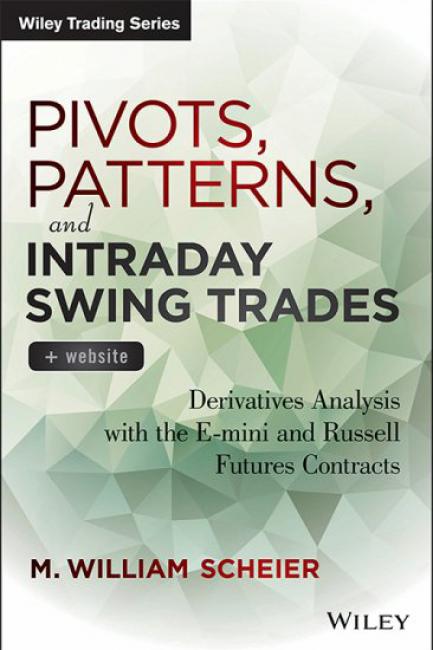
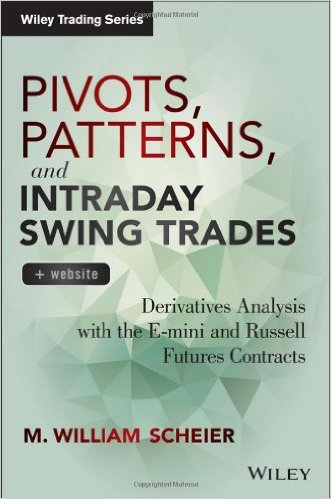
When the Chicago Mercantile Exchange launched the S&P 500 E-mini in 1997, their aim was to provide non-professionals with an opportunity to trade on an even footing with professional traders. Judging by the fact that the intervening years have seen a veritable boom of E-mini stock index trading worldwide, one can conclude that their experiment was a smashing success.
It's easy to see why E-mini trading has become so popular among day traders. First, there are the much lower margins associated with the smaller contract sizes, as compared to their floor-traded counterparts. Also, because trades are executed entirely electronically, there are no market makers or floor brokers. And, unlike commodities or standard futures, there is virtually no chance of manipulation, insider trading or any of the other problems that occasionally affect other financial markets. But along with its many advantages and abundant opportunities, E-mini trading brings an entirely new set of challenges and potential pitfalls that can bedevil the best laid plans of beginners and seasoned day traders alike.
Due to extreme leverage and the intense participation they receive, the stock index futures markets afford little time for traders to dwell on technical conditions. Intraday volatility in the stock indices is far more exaggerated than that reflected in the daily bar charts of other markets. And positioning techniques that have proven reliable in anticipating the actions of long-term trends in other instruments, fail miserably when applied to the countertrend reactions of the highly leveraged S&P futures contract within the shorter, intraday time frames.
Author Will Scheier draws upon his decades of experience as a highly successful day trader and trading educator to provide you with:
- A framework of Day Models for making sense of the chaos of the day trading environment
- Codified, easy-to-adapt trade entry setups
- Trading techniques that are anything but mechanical scalping
- Technical Trade Event Models and their rules
- Tools for spotting major intraday swing trends at the instant they begin
- Fresh insights to Old School and floor trader concepts like the Open Range, Taylor 3-day Cycle and classic pattern breakout filtering
- Archived performance record of real-time trade calls
Divided into four parts, the technical tools exposed in the first three parts are eventually brought together into a cohesive whole in Part Four. There, a special meaning is afforded to them when they arrive in the confluence of pattern, price and time. In addition, once the identity of completed trade entry models are established, Part Four of the book then includes the blueprint for creating a Trade Plan, and enumerates the rules necessary to conduct a business according to that Plan.
Engaging, informative, practical, this reliable resource will put you in a prime position to profit mightily in today's ever more volatile stock markets
Forum on trading, automated trading systems and testing trading strategies
Something Interesting to Read October 2014
Sergey Golubev, 2014.10.05 09:58
The Shifts and the Shocks: What We’ve Learned - and Have Still to Learn - from the Financial Crisis
by
Martin Wolf
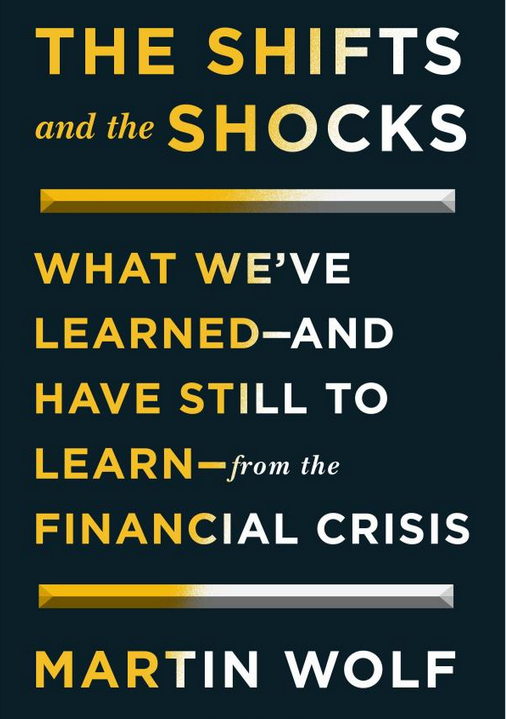
From the chief economic commentator for the Financial Times, a brilliant tour d’horizon of the new global economy and its trajectory
There have been many books that have sought to explain the causes and
courses of the financial and economic crisis which began in 2007–8. The Shifts and the Shocks
is not another detailed history of the crisis, but the most persuasive
and complete account yet published of what the crisis should teach us
about modern economies and economics.
The book identifies the
origin of the crisis in the complex interaction between globalization,
hugely destabilizing global imbalances and our dangerously fragile
financial system. In the eurozone, these sources of instability were
multiplied by the tragically defective architecture of the monetary
union. It also shows how much of the orthodoxy that shaped monetary and
financial policy before the crisis occurred was complacent and wrong. In
doing so, it mercilessly reveals the failures of the financial,
political and intellectual elites who ran the system.
The book
also examines what has been done to reform the financial and monetary
systems since the worst of the crisis passed. “Are we now on a
sustainable course?” Wolf asks. “The answer is no.” He explains with
great clarity why “further crises seem certain” and why the management
of the eurozone in particular “guarantees a huge political crisis at
some point in the future.” Wolf provides far more ambitious and
comprehensive plans for reform than any currently being implemented.
Written with all the intellectual command and trenchant judgment that
have made Martin Wolf one of the world’s most influential economic
commentators, The Shifts and the Shocks matches impressive
analysis with no-holds-barred criticism and persuasive prescription for a
more stable future. It is a book no one with an interest in global
affairs
- Free trading apps
- Over 8,000 signals for copying
- Economic news for exploring financial markets
You agree to website policy and terms of use
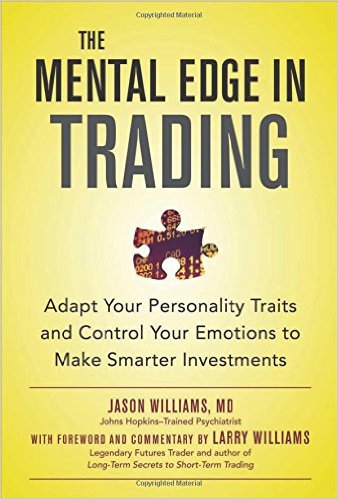
This is the thread about books related for stocks, forex, financial market and economics. Please make a post about books with possible cover image, short description and official link to buy (amazon for example).
Posts without books' presentation, without official link to buy and with refferal links will be deleted.Posts with links to unofficial resellers will be deleted